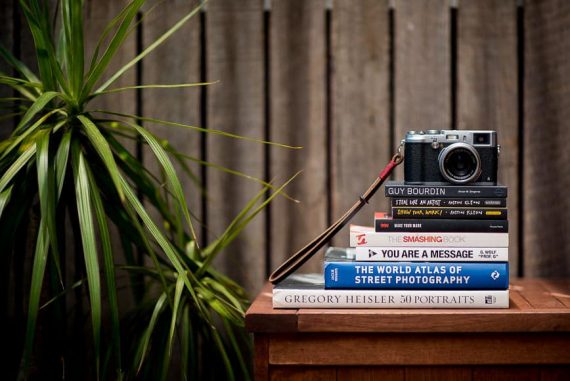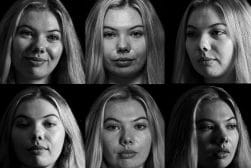
How to Use Symbolism in Photography (+ Examples)
Master the art of symbolism in photography. Explore techniques to convey deeper meanings and view examples that resonate with emotion and narrative.
Learn | By Dana Dekis
Shotkit may earn a commission on affiliate links. Learn more.
Learning how to use symbolism in photography can elevate the look and impact of your photos.
Whether you use colors, objects, or strategic lighting, you can easily add symbolism to your images.
In this guide, I’ll cover how to use symbolism in photography and examples for beginners and pros alike.
What is Symbolism in Photography?
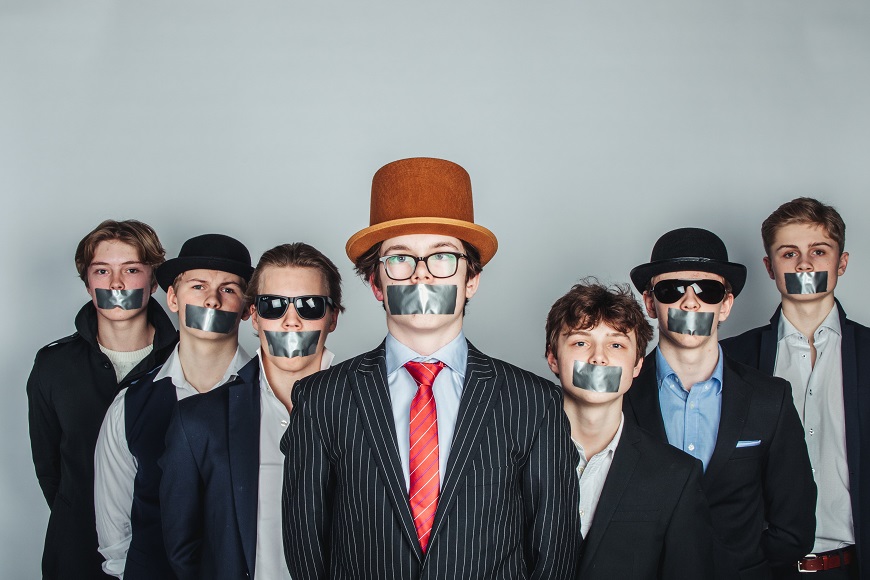
As opposed to a surface-level selfie, symbolism in photography uses various techniques to bring a deeper meaning.
Like with any form of art, symbolism relies on colors, themes, props, and objects to get the desired reaction.
Why use symbolism in photography?
Symbolism photography, or symbolic photography, has a load of benefits in enhancing the content of your photo and its overall value since it typically comes with a deeper meaning. Studying the symbols in Medieval and Renaissance art is a great exercise in critical thinking. For this reason, it’s easy to see why symbolism would transcend from art and culture into photography.
Let’s dive into the benefits of using symbolism in photography:
- Emotional impact: Any psychologist will tell you that certain objects and settings will evoke emotions, so use that to your advantage. Choosing a place of worship as your setting, including balloons in your shots to represent new life and birthdays, or showcasing caskets to represent death will instantly convey emotions worth capturing in photos.
- Visual enhancement: Aside from the depth symbolism brings to photography, it also adds to the aesthetic. A field of beautiful marigolds can represent hope at a deeper level and a seasonal change at a more surface level, while a blood-orange sunset captured from a distance is symbolic of both the heat of the sun and the end of the day.
- Depth: I’ve already mentioned the depth symbolism in photography can add to your photos and portfolio, but why is it important? Because it can take an ordinary photo and make it larger than life with social, cultural, and political overtones.
How to Use Symbolism in Your Photography
1. Geometric shapes

Intentional use of shapes in photography not only creates composition in visual art, but it can also frame your subjects or improve context.
Take this set of dominos above as an example, which draws our attention and makes it clear they’re the subject of the photo, while the fallen ones in the background are intentionally out of focus and encourage us to focus on the ones still standing.
This focus on the standing objects could also have deeper meanings conveying strength and resilience.
2. Dramatic contrast
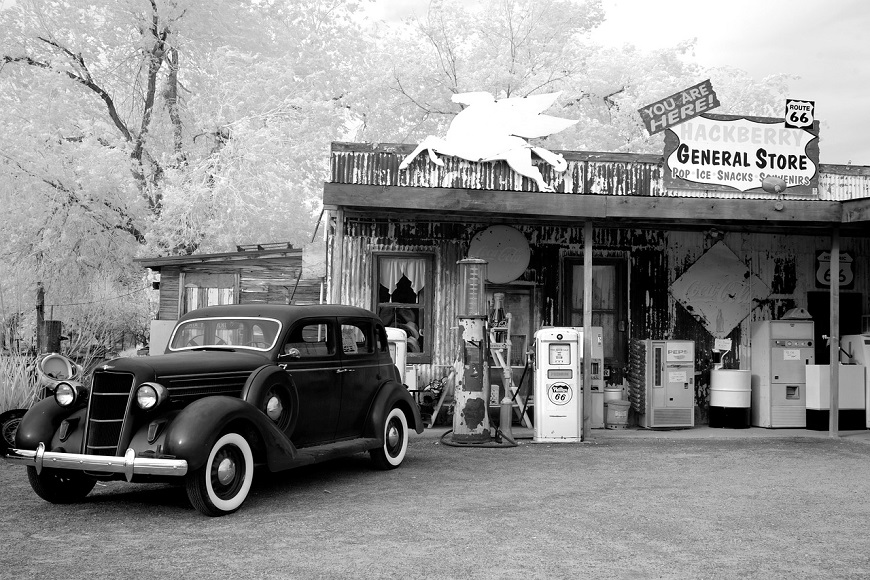
There’s no denying the drama a classic black-and-white image can bring.
Whether it’s an old photo showing family history or a modern self portrait, black-and-white photography offers more flexibility in contrast and shadows.
It’s fairly obvious that the photo above of the classic car is trying to appear vintage, and while it actually looks like a modern attempt at retro, the tasteful choice to make this photo black and white builds strong feelings of history while also exploring symbolism with the props and setting.
3. Symbolic objects

As I noted earlier in the article, objects always bring an idea of symbolism, and wedding rings are a great example.
Characterized by a circular shape intended to be a symbol of eternity, they symbolize that notion of being together until death.
When wedding photographers take photos of wedding rings and engagement rings, they’re immediately adding symbolism to their photos, and you can add depth and personality as shown above with the right background.
4. Powerful colors
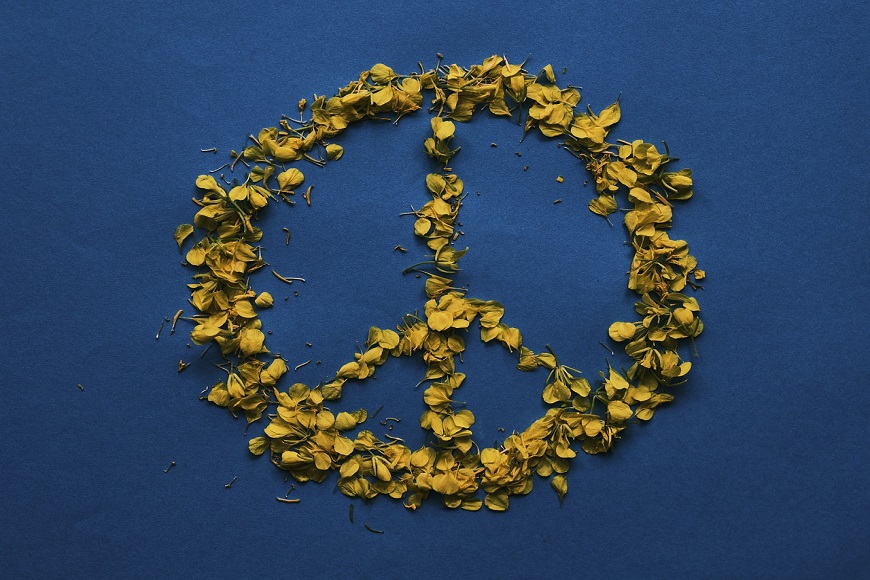
Most of us are already familiar with color psychology — red symbolizes passion and strength, blue symbolizes tranquility, yellow symbolizes hope, and the list goes on.
And in the image above, the photographer has managed to showcase widely recognized symbols with the overt symbolism of the peace sign, as well as highly symbolic colors with blue and yellow.
And because these colors also happen to be the colors of the Ukrainian flag, you can bet there’s an extra layer of symbolic meanings.
5. Idioms

We all have a handful of phrases and idioms that resonate with us, so why not capture that in your own fine art?
How Much Do You REALLY Know About Photography?! 🤔
Test your photography knowledge with this quick quiz!
See how much you really know about photography...

Bringing verbal phrases into photography offers a fun way to convey ideas.
There are so many sayings related to time — think of how the picture above from Aron Visuals can represent several phrases related to time flying or the sand running out.
6. Symbolic moments

Groundbreaking events such as giving birth, riding a bicycle for the first time, or a first day of school definitely symbolize pivotal moments you’ll want to show in your photography.
Take the photo above of a little boy learning to ride a bike for the first time as a perfect example of a symbolic first!
And the rural setting and strong cultural elements add even more intrigue.
7. Emphasis

Whether your subject is a human or an object, isolating part of it from its whole can be an effective way to create a symbolic photo.
The photo above emphasizing the subject’s pregnant belly is a perfect example of the symbolism of new life and a new chapter.
8. Props

Creating symbolic photos is sometimes easier with props.
A subject holding a book will symbolize wisdom, while a subject holding a mirror can represent vanity.
Almost any prop can be leveraged to represent personality traits, and they’ll vary across different cultures!
A gourd may simply represent autumn to you, but it has a different meaning in Chinese culture — fertility.
9. Parades
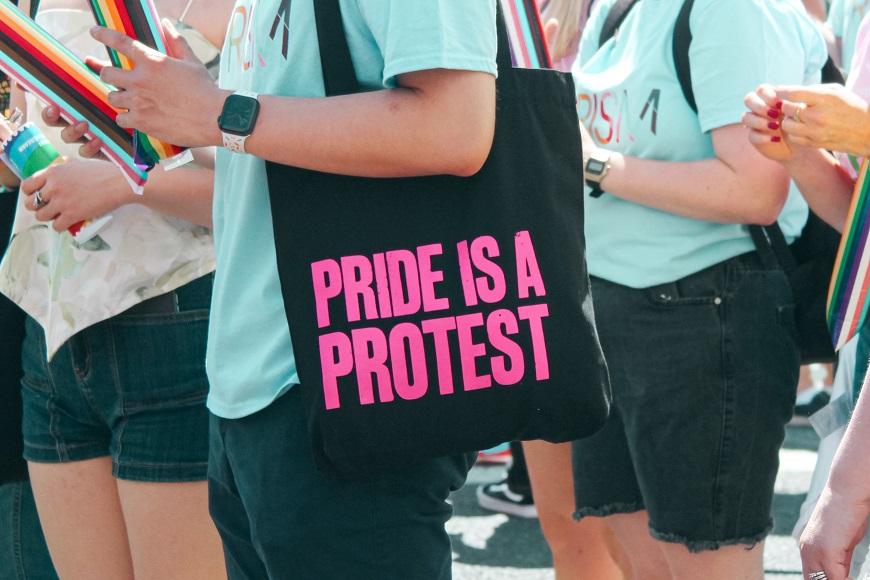
Parades are one of the biggest examples of symbolism on earth.
They can represent everything from freedom and equal rights to sexual orientation pride and holidays.
And most times, you’ll see an array of different symbols there, like this tote with a gay pride slogan at an LGBTQIA+ parade.
10. Animals
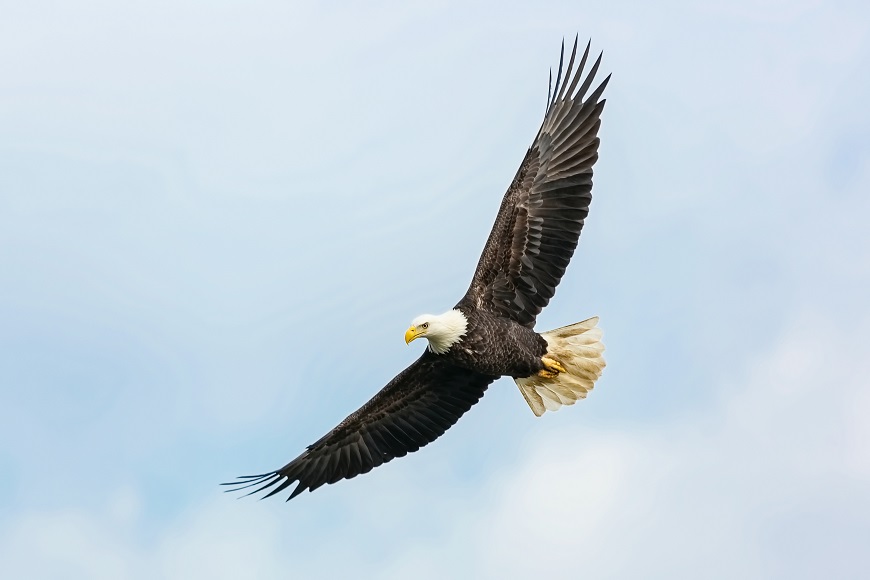
Animals, mythical and otherwise, have long represented different symbols across different cultures.
In Greek mythology, Zeus often morphed into an eagle, which symbolizes power.
And while dragons may have meanings of evil or the devil to some, in Chinese and Japanese cultures, they represent strength and power.
11. Dramatic lighting
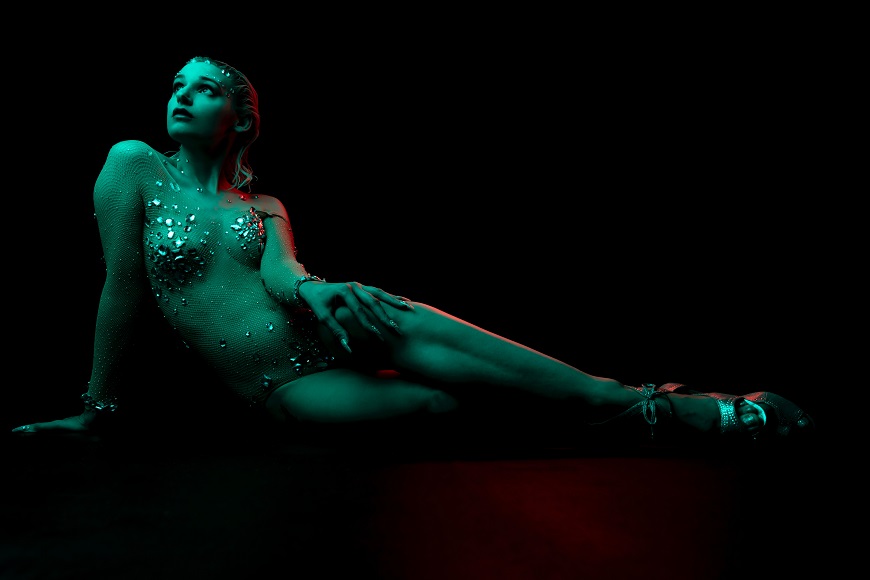
Leaning on lighting is a must to achieve a symbolic photo.
In the film world, dramatic lighting often signifies the antagonist.
In photography, dramatic lighting can be used to draw attention to certain elements and to recreate the drama of the stage, as is the case with the dancer above captured by Alexander Jawfox.
12. Hand gestures

Hand gestures are hugely symbolic across a plethora of cultures: thumbs up typically symbolizes approval and thumbs down does the opposite.
To some, the “okay” symbol where your index finger and thumb connect while your other three fingers stay up simply means things are okay.
However, in other countries, it simply means zero.
13. Multiple subjects
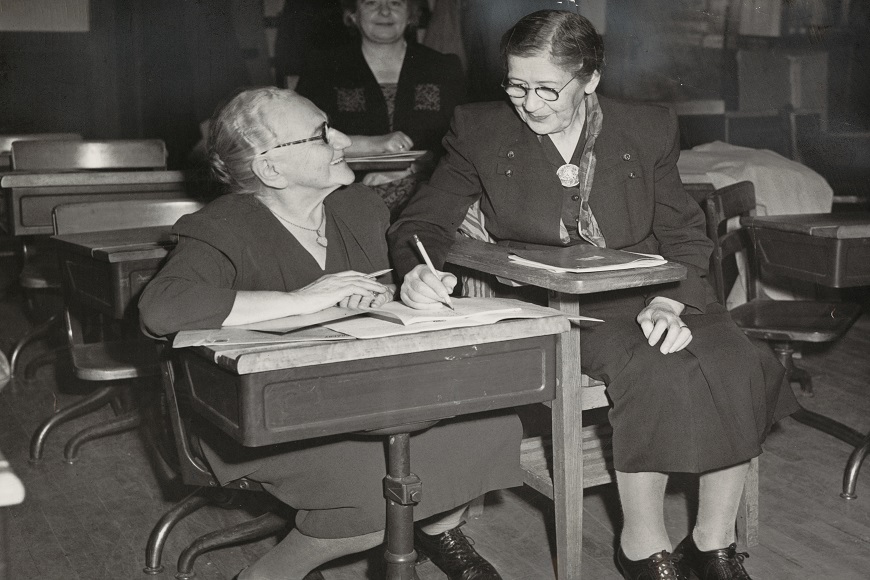
An easy example of symbolism in photography involves using multiple subjects.
While there can be various meanings and factors in photos showing two or more subjects, there’s always depth when different subjects and perspectives exist together.
There’s a lot to unpack in the picture above from The Boston Public Library, which shows two women studying to become American citizens and symbolizes freedom and wisdom.
14. Symbolic combinations

Combining artistic elements is a powerful tool in symbolic photography.
The photo above has glass, which symbolizes both the fragility of the material and on a deeper level, a shield.
The photographer here has done an excellent job of using nature with another object to express a much deeper meaning of environmental protection.
15. Unusual combinations

If you want your work to stand out from a world of other photographers attempting to be symbolic, you naturally have to get creative.
Bathtubs and flowers are a great representation of cleansing and beauty, though it’s not exactly a novel combo.
Try pairing up things that may be an unconventional combination — take a shot of a subject on a treadmill eating ice cream or if you have a brave model, try quickly shooting a subject in a swimsuit or a traditional summer outfit in a snowy setting.
Examples of Effective Use of Symbolism in Photography
1. Hands for teamwork

As noted earlier in the article, hands can be used to achieve symbolic photography.
In the photo above, we see all hands layered on top of each other to represent teamwork or all hands on deck.
2. Wine and bread as religious symbols
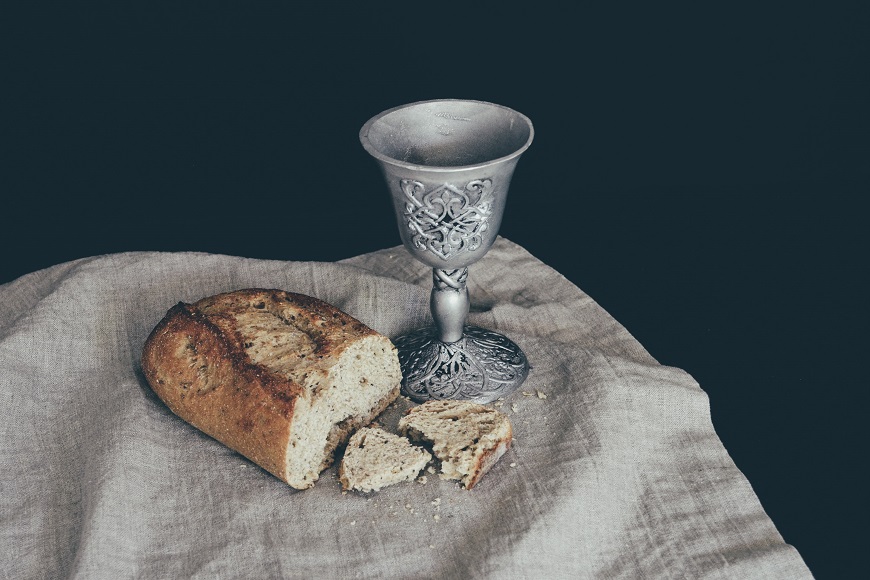
Different religions identify different symbols.
In Christianity, wine and bread represent communion because wine is thought to symbolize Jesus’ blood and bread indicates his body.
The “props” taken from communion here are the perfect examples of religious symbolism.
3. Mirrors for identity
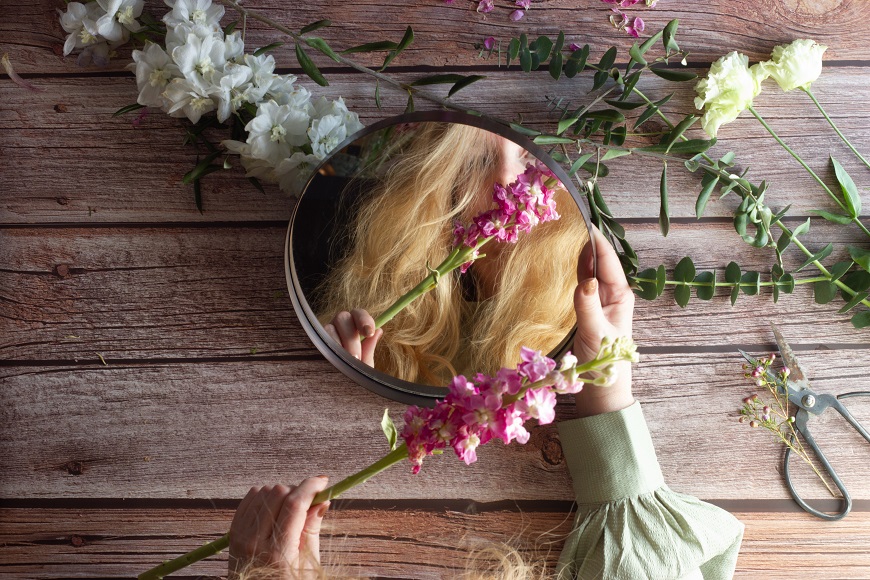
While mirrors can be used to represent vanity, they can also symbolize identity.
In many self-portraits, photographers will use mirrors to depict how they see themselves.
Take this photo above for example, which perfectly illustrates individualism in identity.
As opposed to simply looking in the mirror, the subject uses her hair to hide her face and instead makes the flowers the focus.
This is a great way to represent love and passion and to play around with self-identity.
4. The sunrise for new beginnings

The sun has long represented beginnings and endings.
A sunrise symbolizes the start of a new day, and on a deeper level, a new life.
This photo above is the perfect representation of a new day and everything new that comes with it: attitude, activities, and more.
This gorgeous landscape shot could also be viewed as looking at life from a curious lens, eager to discover the depth of the world around us.
5. White for purity
For centuries, women have worn white on their wedding day to symbolize purity.
But why is white associated with purity? Scholars say it dates back to the pope wearing white as early as the 1500s.
White can also evoke feelings of freshness, cleanliness, and new life.
This photo above not only captures white, but a white flower, and is the ideal denotation of purity.
Symbolism and Photographic Styles
Regardless of which branch of photography you prefer, you can easily apply symbolism!
With portraits, shadows and lighting can create the mood you want and highlight the elements of choice.
In landscape photography, trees can be used strategically to represent life and growth.
With street photography, settings and attire can really illustrate the cultural demographic you want emphasized.
Really, no matter what type of photography you prefer, you can find ways to incorporate various symbols.

Check out these 8 essential tools to help you succeed as a professional photographer.
Includes limited-time discounts.










